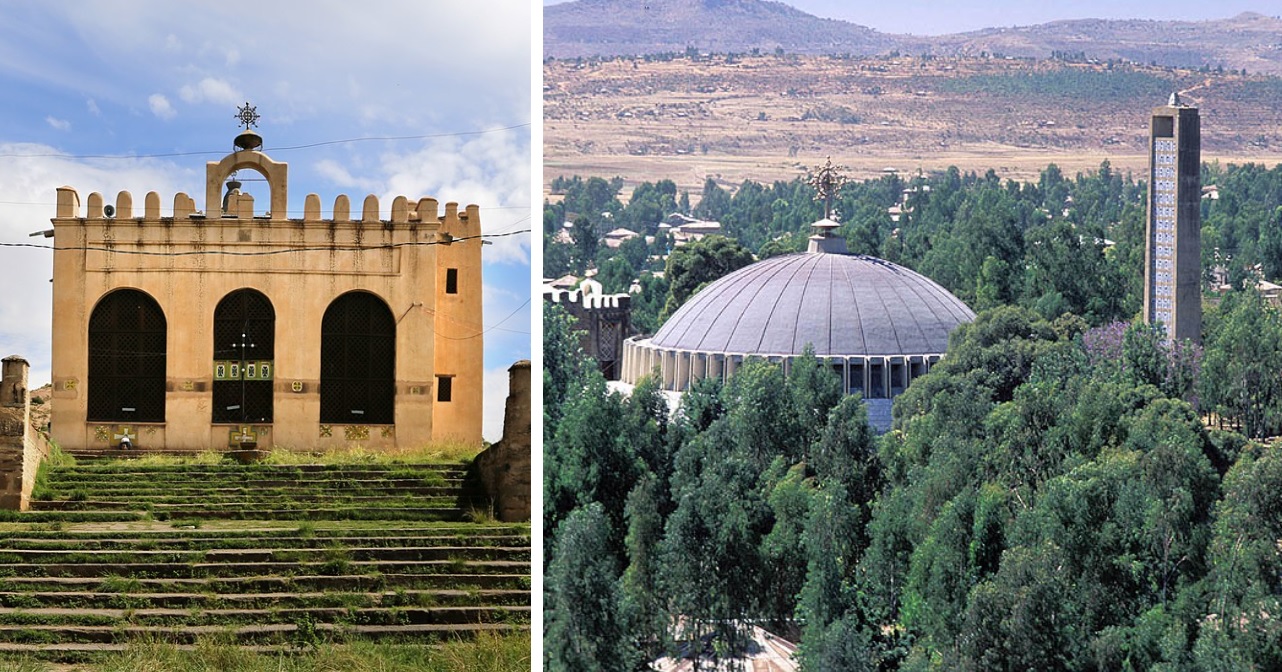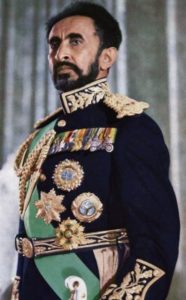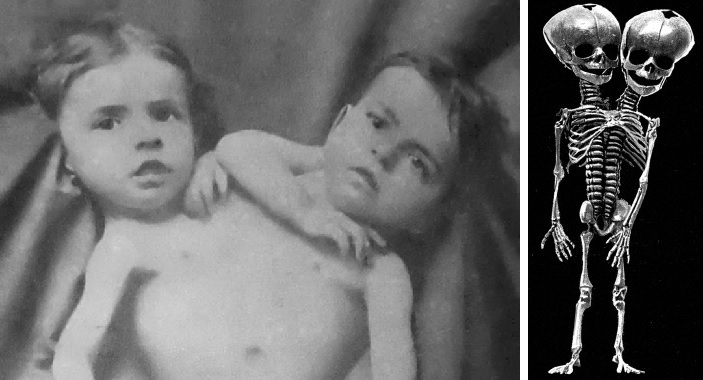
A Modern Replica of the Mishkan in Timna, Israel
This week’s parasha, Terumah, begins the Torah’s lengthy descriptions of the Mishkan, the “mobile sanctuary” or “tabernacle”. Fittingly, the Haftarah is a passage from I Kings describing King Solomon’s construction of the Jerusalem Temple, the permanent version of the Mishkan. Once the Temple was completed, it seems that Solomon actually brought the original Mishkan into the Temple and “parked” it there (I Kings 8:4-6). As per tradition, Solomon foresaw the future destruction of his own Temple, and made sure to build a secret chamber within the Temple Mount to hide the Ark of the Covenant and the original Mishkan vessels there, for safekeeping until the Final Redemption and the Third Temple.
The basic details of his biography are well-known: he reigned as king of a unified Israel for 40 years in a peaceful era (alluded to by his name, Shlomo, meaning “peace”); he had many wives and concubines; and he wrote three books of Tanakh: Mishlei (“Proverbs”), Kohelet (“Ecclesiastes”), and Shir haShirim (“Song of Songs”). What else do we know about this enigmatic king? Some of the lesser-known details will surely surprise you!
King
The Midrash (Pirkei d’Rabbi Eliezer, Ch. 11) states that King Solomon was one of history’s ten greatest and most powerful kings. These are the kings whose influence extended globally. The first such king was God Himself when He created the world. Next came Nimrod, the original “mighty man” of Earth, who ruled “before God” (Genesis 10:8-9). Third was the unnamed Pharaoh who ruled at the time of Joseph (possibly Thutmose IV). King Solomon takes position 4, followed by Ahab of Israel, and then the Babylonian Nebuchadnezzar, who destroyed Solomon’s Temple. King Cyrus of Persia, who freed the Jews from the Babylonian Exile (and is even described as God’s “anointed one” [!] in Isaiah 45:1) is seventh. The eighth is Alexander the Great, the ninth will be Mashiach, and the tenth will be God once again, at the very end of history when the whole world will recognize Him as King, and He “will be one and His name one” (Zechariah 14:9).
According to tradition, Solomon became king at the young age of 12. The Tanakh describes how he wisely consolidated his rule very quickly, and went on to reign peacefully. Though he had a massive army, he never had to use it. Solomon amassed something like 12,000 horses just for his cavalry, plus many more for his chariots (I Kings 10:26), and built 40,000 stalls to keep all the horses (I Kings 5:6). This gave rise to the legend that “Solomon’s Stables” were in the Temple Mount complex, under what is today the Al-Aqsa Mosque. However, that area was actually part of King Herod’s extensive Temple renovations in the 1st century BCE, and was originally a storage area for the Second Temple. It was only during the Crusades that Christian knights used the space for horses, and began to refer to the place as Solomon’s Stables. In 1996, the Muslim Waqf converted it into another mosque, the El-Marwani Prayer Hall.

The Al-Aqsa Mosque is not the gold-topped Dome of the Rock, but the domed structure on the southern end of the Temple Mount (Left). Nearby and beneath are Solomon’s Stables, currently another mosque (Right).
The Tanakh makes sure to specify clearly, multiple times, that Solomon amassed so many horses. This is because the Torah prohibits a king from having too many horses—as well as from having too many wives (Deuteronomy 17:16-17). It seems the Tanakh really wants us not to miss that Solomon transgressed here, and brought about his own downfall, but there may be a different answer.
Husband
One of the things Solomon is most famous (or infamous) for is having 700 wives plus 300 concubines (I Kings 11:3). Presumably, he married them in order to solidify peace treaties and make alliances with neighbouring peoples and kingdoms. While his intentions were surely good, the Tanakh states openly that these women led his heart astray and made him turn to idolatry. The Talmud (Shabbat 56b) affirms that Solomon himself really did not sin. It was only reckoned as if he did, since he was unable to restrain the women and prevent the idolatry from being imported into the Holy Land.
In fact, the same page of Talmud states that on the day that Solomon married the princess of Egypt, God sent the angel Gabriel to plant a reed in the Mediterranean Sea. That reed would grow to become the plot on which Rome was later founded. The poetic justice is clear: Solomon built the Jerusalem Temple, but his actions simultaneously resulted in the future destruction of the Jerusalem Temple. The Ramchal (Rabbi Moshe Chaim Luzzatto, 1707-1746) adds in his Ma’amar haGeulah (Ch. 71) that had Solomon not married the Egyptian princess, all the spiritual rectifications of the cosmos would have been completed with the Temple’s construction, and the Final Redemption would have immediately begun then.
While the Egyptian princess was the worst of them, his royal Ammonite wife Na’amah was the best. According to one tradition, Mashiach descends from King David specifically through Solomon and Na’amah (Bava Kamma 38b; see also Rabbi Menachem Azariah de Fano’s Sefer Asarah Ma’amrot, Ma’amar Em Kol Chai 3:9). Thus, although Solomon did not merit to be the anointed messiah himself, he nonetheless is still the progenitor of the rightful future messiah. (Solomon’s Na’amah should not be confused with the earlier Na’amah of Genesis, who is widely considered a wicked figure in mystical texts.)
Rastafari?
Another queen that Solomon famously liaised with is the unnamed Queen of Sheba. The extent of their relationship is not clear. In one version, Sheba is a personification of the demonic Lilith, and sought to trick Solomon, but he outsmarted her. In another, she isn’t a queen at all, but Malkat-Sheva refers to the whole kingdom, and it was the male king of this place that visited Solomon, not a woman! (See Bava Batra 15b) In yet another version, more popular in non-Jewish communities among Arabs and Africans, she not only visited Solomon but married him. Their children went on to build their own dynasties in Arabia or Africa, depending on the legend. Historical sources typically identify Sheba as being somewhere in Arabia, perhaps Yemen. Others say it is in Africa, particularly Ethiopia (this was the view of Josephus, for example).
For Ethiopians, the single child of Solomon’s one-time union with the Queen of Sheba was Menelik, supposedly the founder of Ethiopia’s royal line. There is no historical evidence at all to support this, and it was only claimed for the first time by King Yekuno Amlak in 1262 CE when he established a new dynasty. Shortly after, in 1321, the Kebra Nagast was published. This text, which has since become something of a revered Ethiopian national book, claims that Solomon wanted Menelik to be his successor in Israel. Menelik refused, wishing to return to be king of Ethiopia, so Solomon gave Menelik the Ark of the Covenant! (Or, alternatively, the Ark was secretly taken by one of the priests who was sent to accompany Menelik.) Many today still believe that the Ark is hidden somewhere in Ethiopia.

Left: The Old Church of Mary of Zion in Aksum, Ethiopia is said to contain the Ark of the Covenant inside it. Conveniently, no one is ever allowed to see it, not even the head of the Ethiopian Church! Right: The new cathedral at the same site, built by Emperor Haile Selassie – more on him below.
Needless to say, the claims of the Kebra Nagast have no actual basis in fact. Still, this legend helped to prop up the 19th and 20th century movement of “Ethiopianism”, which pushed for Africans to reclaim their former glory. In turn, this movement gave birth, in Jamaica, to a new religion called Rastafarianism. Rastafarians believe that the last emperor of Ethiopia, Haile Selassie (1892-1975), was the true Davidic king and direct descendant of King Solomon through Menelik, and refer to him as the “Lion of Judah” and the messiah. (The term Rastafari comes from Selassie’s birth name, Tafari Makonnen, and the title ras, like the Hebrew rosh, “head” or “leader”.)

Haile Selassie in 1970
Many Rastafarians go further in identifying Selassie with Jesus, and as (yet another) god on Earth. Rastafarianism is a new religion, and its beliefs vary greatly and are not set in stone, though much has clearly been adopted from Judaism and Christianity. For those who like reggae music, all of this will help to explain why reggae lyrics often mention King Solomon and Zion, though “Zion” is usually a codeword for Africa. In fact, Zionism clearly rubbed off on Rastafarianism, which in some iterations encourages Africans to return to their ancestral homeland in Africa and build it up into a flourishing new realm, much like Jews have done in Israel!
As for Haile Selassie, he was not a particularly good leader (some have described him as a brutal dictator) and he was deposed and imprisoned in 1974. He died the following year, initially said due to poor health, but later revealed due to being strangled to death.
First Sage
We read in I Kings 5:11 that Solomon was the wisest man in the world, and his wisdom was known throughout the planet. The following verse says he composed 3000 proverbs and 1005 songs. We do not have all of them today, but many are preserved in the Tanakh. The Midrash has another explanation for this, that he embedded within his three books 3000 different interpretations and layers of meaning (Kohelet Rabbah 7:23).
In his Discourse on a Wedding, the Ramban (Rabbi Moshe ben Nachman, 1194-1270) cites earlier sources saying that King Solomon was the first genuine chakham. The Ramban held that before Solomon, no one really understood the Torah on a deeper level. Solomon was the first to extract the Torah’s inner meanings, and was the first to be able to explain the Torah clearly and effectively to the lay man. On that note, the Talmud (Shabbat 14b) states that King Solomon is the one that instituted the mitzvahs of netilat yadayim and eruv.
Despite being the wisest, the Midrash (Vayikra Rabbah 30:14) says there were nonetheless seven things Solomon did not grasp, based on Proverbs 30:18, where Solomon says “Three things are wondrous to me and four I do not know.” The three things that were wondrous to him were the secrets of the Pesach offering, matzah, and the bitter herb maror. The four things he did not know are the mysteries of the arba’at haminim, the “four species” of Sukkot. Meanwhile, when he said in Ecclesiastes 7:23 that “I thought I could understand it, but it eluded me.”—this refers to parah adumah, the mysterious law of the red heifer (Kohelet Rabbah 7:23). Although Solomon didn’t grasp the inner meanings of this handful of mitzvot, he still understood the basic reasons for these mitzvot on a practical level, as the Rambam (Rabbi Moshe ben Maimon, 1138-1204) explains in Moreh Nevukhim (III, 26).
Kabbalist
Beyond being the wisest, in both Jewish and non-Jewish sources Solomon is seen as a great mystic and wizard, a master of white magic and black magic. We find references to Solomon’s magic ring or key, to “Solomon’s Seal”, and even to a flying carpet! He was a master of Kabbalah, and knew all the letters and permutations of the Names of God, and the secrets of the Hebrew alphabet. It is through such knowledge that he built (or, at least, designed) the Temple. Midrash Mishlei 30:1 says this is why one of his names was Itiel (איתיאל) since he knew the mysteries of otiotav shel El (אותיותיו של אל), the divine Hebrew letters. Solomon had seven different names altogether, the others being Yedidyah, Agur, Ben Yakeh, Lemuel, and Kohelet. All of these names have a source in Tanakh.
The Zohar mentions and discusses Solomon’s names in several places. In one of these places (II, 38b-39a) it says that the seven names correspond to the Sefirot, and that the three books that Solomon wrote also correspond to the three major Sefirot of Chessed, Gevurah, and Tiferet. The love poem of Shir HaShirim is Chessed, lovingkindness; the harsh and existentialist Kohelet is Gevurah, severity and judgement; and the wise and balanced Mishlei is Tiferet, beauty and truth. Elsewhere (I, 20a) the Zohar says that Solomon was the first to comprehend the Kabbalistic notion of kelipot, the spiritual “husks” in Creation that cover and conceal the holy sparks within. This is the meaning of Song of Songs 6:11 where Solomon wrote “I went down into the grove of nuts [ginat egoz]…” Solomon meditated upon the egoz, its tough exterior and nourishing inner fruit, and understood it as a metaphor for the entire universe.
As something of a wizard, Solomon had many legendary interactions with Ashmedai, “prince of demons”. There is an allusion to this in his own words, since in Ecclesiastes 2:8 he wrote that he was able to engage with sharim v’sharot… shidah v’shiddot… “male singers” and “female singers” as well as “male demons” and “female demons” (Gittin 68a). The Talmud here proceeds into what is probably the Talmud’s single longest narrative: how Solomon had to find Ashmedai and consult with him in order to find the location of the Shamir, the special “worm” used to build the Temple (as explored in depth before here). Solomon ultimately achieves his goal, acquires the Shamir, and builds the Temple. He keeps Ashmedai close by, and uses the demon prince when necessary.
In one story (Zohar III, 61a), we learn that Solomon’s ally King Hiram of Tyre—who provided much of the supplies and artisans for the Temple—was at first extremely haughty and had himself deified. Solomon wanted to humble Hiram and bring him “down to Earth”. So, he tasked Ashmedai to take Hiram on a literal trip through Hell. When Hiram saw what goes on down there, he repented and became a righteous king. This is why we read in I Kings 5:26 that peace was finally made between Hiram and Solomon.
Another story of Solomon and Ashmedai is found in the commentaries to Menachot 37a. Here, the Talmud records how one Pilemo* asked Rabbi Yehuda haNasi if a two-headed man should wear tefillin on both heads? Rabbi Yehuda wanted to excommunicate Pilemo for his ridiculous question. However, shortly after he got news of the birth of a child with polycephaly, an extremely rare condition where a person is indeed born with two heads. On this story, Tosfot comments that Ashmedai once produced such a two-headed person, who got married and led a seemingly normal life. The two-headed man had children, one of which was also two-headed. When the man died, the two-headed child demanded a double portion of inheritance. This difficult case was brought before the wise judge Solomon.

Left: A case of polycephaly, from Jan Bondenson’s ‘The Two-Headed Boy and Other Medical Marvels’. Right: an 1893 skeleton exhibiting polycephaly.
There are other interesting narratives of Solomon and Ashmedai, but just one more must be mentioned: that time when Ashmedai managed to convince Solomon to give up his magic ring, engraved with God’s Name. As soon as Solomon makes this terrible error, Ashmedai uses his powers to fling Solomon “four hundred parasangs” away—roughly 2000 kilometres! (One parasang, or parsa, is 4 mil, and one mil is 2000 cubits). Ashmedai impersonates Solomon and takes his form, going on to rule in his place. Solomon, meanwhile, has to somehow find his long way back to the Holy Land. By the time he does make it back, he is an unrecognized and dishevelled pauper, begging just to survive. At the end, he is able to prove that he is the rightful king (especially because Ashmedai-Solomon was acting very strangely).
Though Solomon reclaims the throne and Ashmedai flees, the king is forever fearful and paranoid henceforth, which is why we read: “Behold Solomon’s bed, surrounded by sixty strong men from the warriors of Israel; all holding swords and trained in warfare, each man with his sword on his thigh, because of fear in the night.” (Song of Songs 3:7-8) Note how this story serves to explain much of Ecclesiastes, including many of its verses and its overall negative tone. Solomon went through some horrible things in the course of this ordeal, so it is understandable why he would proclaim that “all is vain”. Although our Sages debated removing Ecclesiastes from Tanakh because of this, they ultimately decided that it should be kept, both because it is a worthy and sobering read, and more significantly because of its conclusion: “The sum of the matter, when all is said and done: Revere God and observe His commandments, for this is the whole of man.”
Shabbat Shalom!
*I think it is no coincidence that the man’s name is Pilemo, probably the Greek name Philemon. The poet and playwright Philemon (c. 362-262 BCE) was one of the most famous comedians in ancient Greece! Of course, ancient Greek myth was full of stories of all kinds of bizarre creatures and multi-headed animals.

Pingback: The Significance of Babylon in Judaism | Mayim Achronim